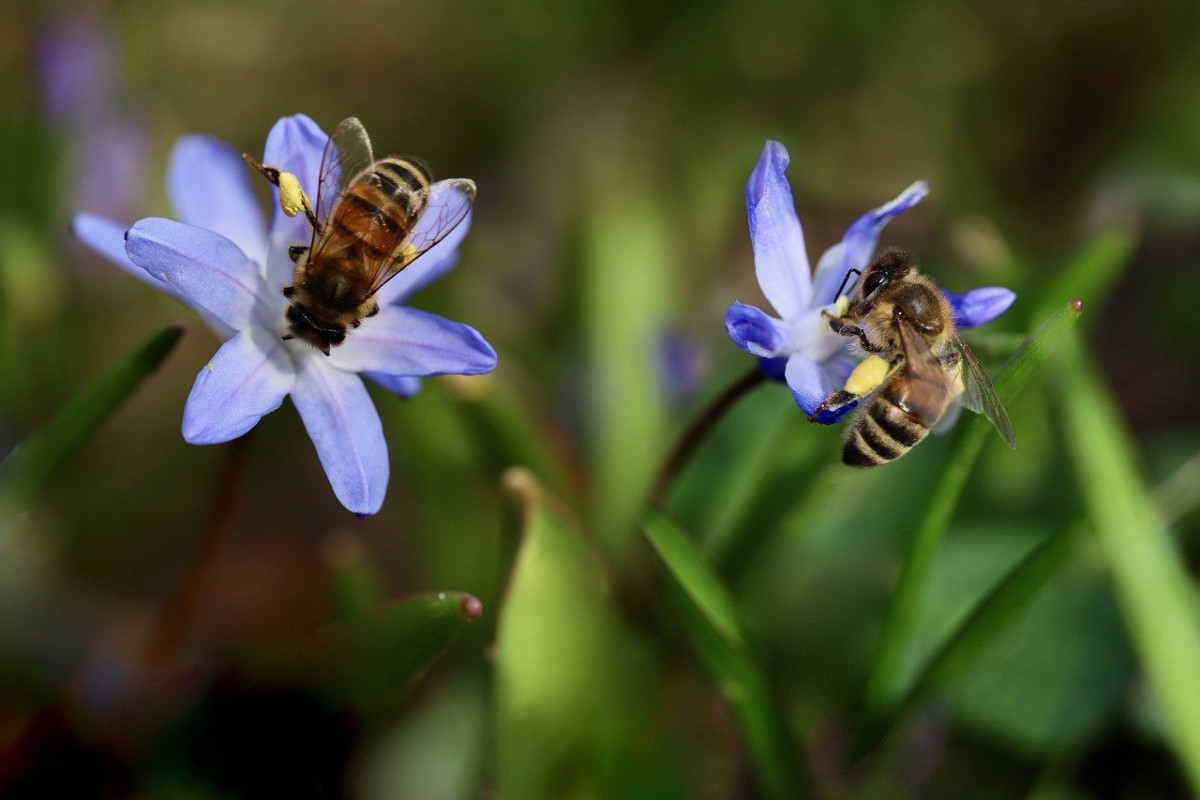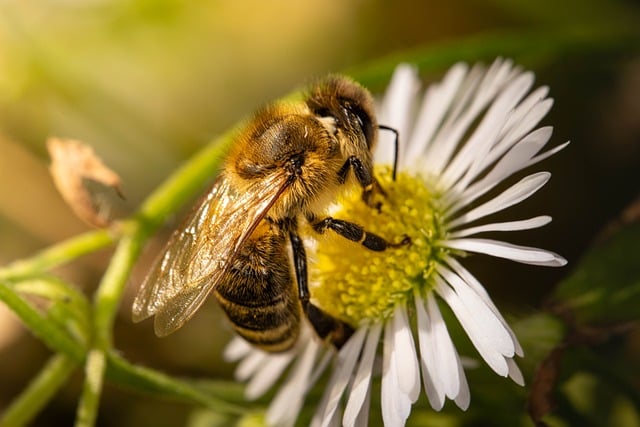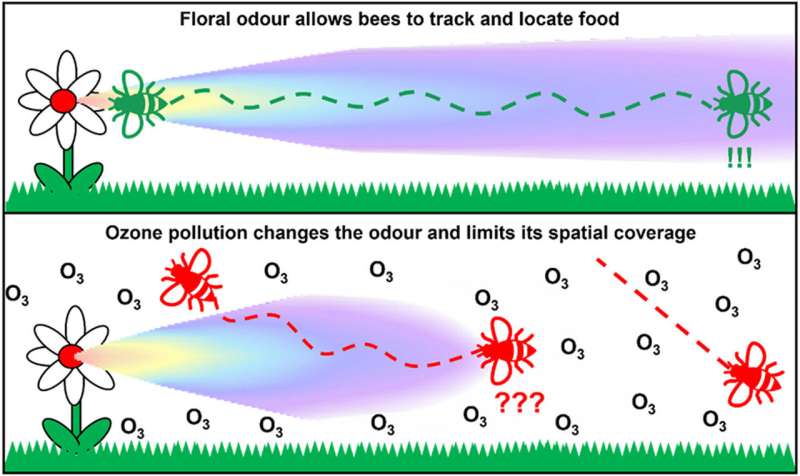 Climate change, habitat loss, agricultural chemicals…there is no shortage of threats to insects. With steep population declines, many are at high risk of becoming endangered. Bees are no exception.
Climate change, habitat loss, agricultural chemicals…there is no shortage of threats to insects. With steep population declines, many are at high risk of becoming endangered. Bees are no exception.
Recent research suggests that air pollution is making it more difficult for bees to pollinate flowers. These scent-savvy insects are able to navigate a complex landscape of smells and locate nectar and pollen, but pollutants in the air are disrupting this process.
Let’s take a closer look at how bees detect smells, and how pollutants prevent them from pollinating flowers.
Nature’s Powerful Scent Detectors!
To understand why smell detection is so important to bees, we first need to understand the complex symbiotic relationship between plants and pollinators.
Pollination is the process where pollen, plants’ reproductive gametes, is transferred to another plant or another part of the same plant. Pollen is thus crucial to plant reproduction.
Pollinators play a major role in making that possible. Yet, pollinators are more interested in pollen as a source of food and a hint that delicious, sweet nectar is present. But plants can’t afford to have bees consume all of their pollen. Because of this, flowers often have unique formations to conceal pollen and challenge hungry bees.
 However, pollen can’t be too well-hidden – after all, no insects would be able to pollinate the plant! Many plants thus provide “hints” that can attract just the right number of pollinators. In turn, bees have become adept at picking up on flowers’ subtle cues and locating pollen.
However, pollen can’t be too well-hidden – after all, no insects would be able to pollinate the plant! Many plants thus provide “hints” that can attract just the right number of pollinators. In turn, bees have become adept at picking up on flowers’ subtle cues and locating pollen.
Bees are skilled at detecting these cues in a number of fascinating ways. Some plants, for example, coordinate the color of their flowers to when stocks of pollen and nectar are most plentiful. Other plants have special “nectar guides” that create a path on the ultraviolet spectrum of light for pollinators to follow.
Bees thus pay attention to color and light, and in addition to that, they even detect electric fields surrounding flowers! But foremost of all, bees and other pollinators possess a remarkable capability to “smell” chemical compounds emitted by flowers. While foraging, bees follow trails of chemical scent compounds emitted by flowers.
Once bees discover particularly abundant sources of nectar and pollen, they are able to remember these locations by each plant’s unique fragrance.
Impact of Air Pollution
Scientists James Ryalls, Robbie Girling, and their colleagues at the University of Reading conducted a study to determine how different pollutants affected pollinators. In their controlled experiment, patches of black mustard plants were exposed to pipes releasing ozone and nitrogen oxides – common pollutants produced by cars and power plants. Other patches served as controls, with pipes releasing normal, uncontaminated air.
Over the summers of 2018 and 2019, the scientists observed the mustard plants and recorded the numbers of visiting pollinators. The results were astonishing.
 The polluted patches received substantially fewer insect visitors than the non-polluted patches – a decrease as high as 70%! Polluted flowers also received 90% fewer visits overall. Though black mustard plants can self-pollinate, successful pollination in polluted patches dropped by 14 to 31 percent.
The polluted patches received substantially fewer insect visitors than the non-polluted patches – a decrease as high as 70%! Polluted flowers also received 90% fewer visits overall. Though black mustard plants can self-pollinate, successful pollination in polluted patches dropped by 14 to 31 percent.
What surprised the scientists most, however, was that no dangerous levels of pollution were present in the experiment. In fact, the concentration of pollutants used was even lower than what US regulations consider safe!
To investigate further, the scientists used a special wind tunnel to examine pollutants’ effects on floral scents. The tunnel was filled with ozone and a device that released synthetic floral scents. Using chemical detectors, the scientists discovered that the ozone actively degraded the floral scents. The ozone not only shortened the distance traveled by the simulated floral compounds but also removed some of them entirely.
The scientists then put trained honeybees to the test. These bees had been conditioned to stick out their proboscises, or tongue-like organs when they detected the floral scent. When scientists placed the bees at varying distances from the ozone-degraded scent, only a small percentage of the insects were able to identify it.
The bees’ ability to smell the scent also decreased as their distance from the source increased. At a distance of 6 meters, 32 percent of the bees could detect the scent, but at 12 meters, only 10 percent could do so.
Pollinators are crucial to our ecosystems. About 75% of the world’s food cannot be grown without them. These research findings are thus a poignant reminder that we should look out for these tiny creatures.
Sources: LiveScience, Atlantic, Science.org, BBC, WSJ, Mother Jones











